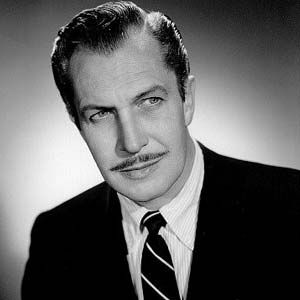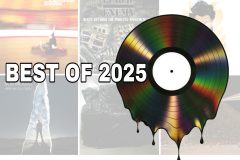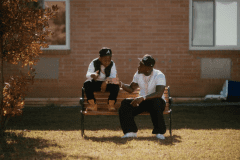A true innovator
ZOMBIE
So I’m about to dig into the first of four CDs that I bought in Dayton. We’ll be starting with:Creepy Classics: A Mysteriously Moving Collection of Haunting Classical MasterpiecesI’d be willing to bet that Halloween alliteration started with Vincent Price. This is not a collection of creaking doors and bubbling cauldrons, but a half an hour’s worth of orchestral music that has some scary history or demonic theme running through it. For the most part.Here’s a track listing, I have added the original composer’s names:1. “Night on Bald Mountain,” Modest Mussorgsky2. “Danse Macabre,” Camille Saint-Saëns
3. “March Funebre Des Marionettes,” Charles Gounod
4. “March of the Gallows,” Hector Berloiz
5. “In the Hall of the Mountain King,” Edvard Grieg
Right, down to it then. I’m not even going to sit here and tell you that these compositions are spooky or scary by our modern sound designed horror movie standards. You could actually put on a CD with creaking doors and bubbling cauldrons and I’m sure that given the right state of mind, those sounds would be scarier than this CD. But, it’s Creepy classics. A bit softer, and hopefully a little more cerebral than just out-and-out scare the shit out of you. Like knowing the back story is what makes these compositions a little taboo? And while this CD fails as a sound effects weapon to frighten trick-or-treaters, and you’ll never hear it inside a haunted house, there is some interesting back story to the pieces. Most of them that is.“Night on Bald Mountain,” Modest Mussorgsky – Right off the bat the best stuff is at the beginning. You may remember this piece from Fantasia where some demon calls forth the dead in the form of skeleton-ghosts by casting his shadow on a town from high atop a ‘bald’ (meaning no trees) mountain, then having a demon orgy in the center of the mountain. AKA the awesome part of Fantasia. This version is the second more popular version, that omits a choir. The original concept was a tone poem composed by Mussorgsky that had at its center a witch’s sabbath. That’s right this piece is all about cold-gates-of-Keiv-wicked-Russian-demonic-gathering-of-the-damned-hell-fire-and-brimstone-soundtrack-of-midnight. The piece was never performed in Mussorgsky’s life time, as we know it and was arranged properly after his death. The original tone poem had the following program: 1. Assembly of the witches, their chatter and gossip 2. Cortége of Satan 3. Black service, Black mass 4. Sabbath. So while the creepiest thing about the piece may be circling violins and violas from the hook that you know, with the brass and percussion swooping in like vampire bats, it’s really that slow and peaceful ending that is truly a terror. I like how the piece ends all sweet and 1800’s dainty, but at a black sabbath, and those last few notes played by harp and violin and viola. Like a chamber door made of witch’s nails shutting closed as dawn breaks.
“Danse Macbre,” Camille Saint-Saëns – I know what you’re going to say once you hear this one. “What’s up with the violin at the begining?” Well Saint-Saëns was re-working this one from an original vocal and piano piece into a tone poem for orchestra and replaced a vocal line with that Dixieland violin peppered throughout the piece. Bad move I know. But as with Night on Bald Mountain, you’d be hard pressed to find a recording of the super ethereal original version, and have it available for pillaging by PC Treasures Inc. out of Oxford, MI. But as legend tells, every Halloween at midnight, Death has the power to use his fiddle to call the dead to dance for his pleasure until dawn breaks. And this is the music by which the dead dance. In most European cultures there is the allegory of ‘”he Dance of the Dead.” The allegory is used to teach people about the temporary nature of this life and that Death has the ability to make all people, rich or poor, dance together. Still, Danse Macbre is no where near melting your face the way Sam Shakleton can with haunting music. But there’s no façade to Death is Not Final. Saint-Saëns has his ghouls dancing around in flowing gowns and fancy pantaloons. All nice and proper, while their flesh rots behind their party masks. Which is why by the second track of this CD you see why it’s already failed. No one is going to believe that you are culture jamming a haunted front door step by playing something this Victorian. And no one will want to hear the back story, not even if you have double packed Resse’s cups and not just the singles.
“March Funebre Des Marionettes,” Charles Gounod – Even more French sounding that the previous piece. And miss-labeled (actually “March Funébre d’une Marionette”). But a few things to remember. Gounod composed, I think, the first opera around Goethe’s Faust, and that this piece was just an instrumental B-side to his already impressive body of work. Not really rep-ing the best of his works, or the creepiest. The theme here is of two pallbearers lamenting the death of a marionette (the person, not the doll) who lost a duel. So the music is supposed to explore themes of control, fate, and the seemingly cruel shortness of life. Oh, it’s also where Alfred Hitchcock got his theme. So there’s that I guess…
“March of the Gallows,” Hector Berloiz – Very deceptive in its name. And it’s execution. One minute of tension before we get to the gallows, some cellos shed some tears, then it’s Romantic crap the rest of the way out. Nothing scary, spooky, or haunting here. So much so that I didn’t even bother to research the piece.
“In the Hall of the Mountain King,” Edvard Grieg – Nothing to see here. Keep moving son.
So in the end, you should probably avoid any thing labeled both “Creepy” and “Classical.” It’s probably not going to have George Crumb’s A Haunted Landscape and will most definitely need a bunch of explaining. In the case of “Night on Bald Mountain, “it enhances the cultural relevance of the piece today. In the case of pretty much anything else, it just means you are going to get your candy sac punched.
Goodnight out there, whatever you are.








Social Media